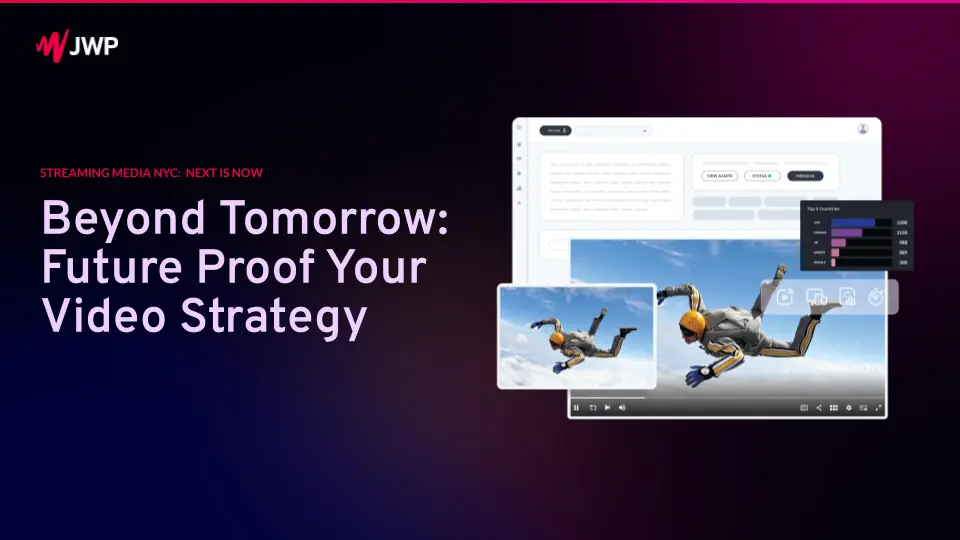Join Alison Kolodny, JWP’s Senior Product Manager of VOD Streaming, as she presents her insightful keynote on future-proofing your video strategy in an evolving industry. Discover how to stay ahead in the fast-paced world of video streaming and gain a competitive edge with valuable insights for professionals across the video streaming landscape.
In this keynote, Alison dives deep into the core aspects of future-proofing your video strategy: from the importance of operational agility and data-driven decision making to flexible monetization models and the power of simplicity and scalability.
What You’ll Learn:
- Operational Agility: Implement strategies to quickly adapt to new market demands and technological advancements
- Data Utilization: Leverage first-party data to enhance personalization and drive viewer engagement
- Flexible Monetization Models: Explore innovative approaches to maximize revenue through diverse monetization strategies
- Scalability and Simplicity: Design your systems for seamless expansion and simplified operations
What You’ll Walk Away With:
- Actionable Insights: Concrete steps to enhance your streaming infrastructure and operational processes
- Competitive Strategies: Techniques to differentiate your offerings in a crowded market
- Revenue Growth Ideas: Practical ideas to boost your ad revenue and subscription retention
Don’t Miss Out!
Watch the full keynote now and start transforming your video strategy today!
